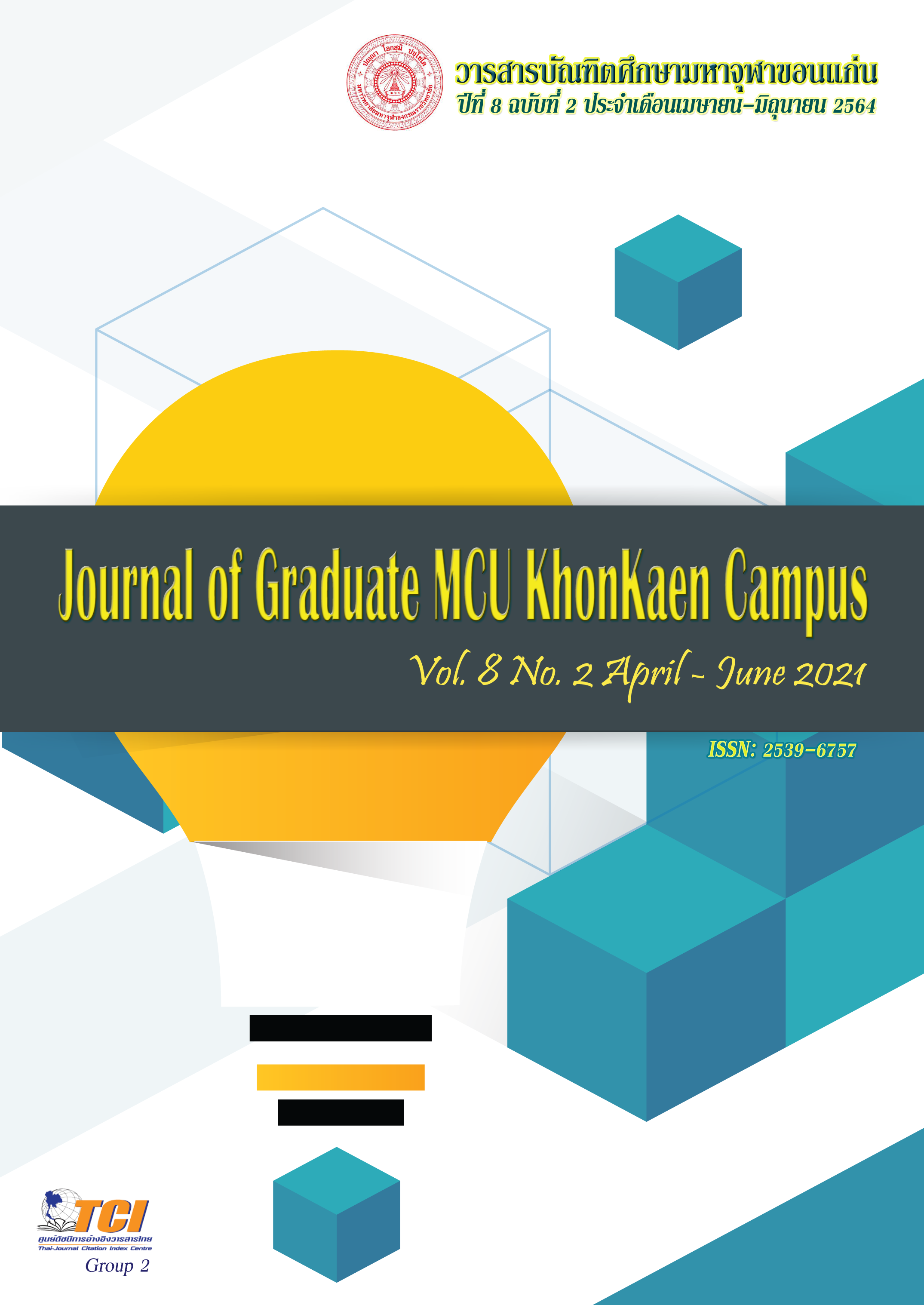THE BUDDHISM PROPAGATION MODEL OF DHAMMADUTA MONKS IN THE HONG KONG SPECIAL ADMINISTRATIVE REGION OF THE PEOPLE'S REPUBLIC OF CHINA
Main Article Content
Abstract
The objectives of this research were: 1) to study the propagation of Buddhism in the lifetime of the Buddha; 2) to study the propagation of Dhammaduta monks in the Hong Kong Special Administrative Region of the People's Republic of China, and 3) to propose a model of Buddhist propagation of Dhammaduta monks in the Hong Kong Special Administrative Region of the People's Republic of China. This study was carried out by means of the qualitative research methodology. The researcher has studied primary and secondary documents and conducted the fieldwork to collect the data by interviewing the participants. Then the obtained data were analyzed and the findings were presented by the descriptive approach.
The research results were as follows:
The propagation of Buddhism in the lifetime of the Buddha: Lord Buddha has used the method of spreading Buddhism by traveling to preach the persons by himself according to occasions with different styles and principles of teaching, causing Buddhism to spread throughout India. Later, in the post-Buddha era, King Ashoka sent 9 Buddhist ambassadors to travel to spread Buddhism to many countries until Buddhism prospered in Sri Lanka, Thailand, Laos, Burma, China and expanding to all corners of the world respectively.
The propagation of Dhammaduta monks in the Hong Kong Special Administrative Region of the People's Republic of China: The Dhammaduta monks began to spread Buddhism in the Hong Kong around 1989. They were able to build the first Thai temple in Hong Kong and then built many more temples to date. There are two aspects of the study: 1) the problem of Buddhist propagation in Hong Kong which can be divided into 6 aspects: communication, culture and tradition, belief, management, places and personnel; 2) the propagation conditions of Buddhism in Hong Kong are divided into 5 areas: media use, propagation activities, social work, Buddhist rituals and modes of practices of the Dhammaduta monks.
The model of Buddhist propagation of Dhammaduta monks in the Hong Kong is divided into 6 areas: 1) Education: local language and cultural training programs should be organized; 2) Social work: a center to help Thai people abroad should be set up; 3) Cultural exchange: international cultural activities should be organized; 4) Network building: there is MOU signed with the temples, government and organizations; 5) Proactive use of communication media: there is a project of volunteerism and using online media; 6) Personnel: the Dhammaduta monks should have knowledge and volunteerism.
Article Details
References
ราชกิจจานุเบกษา. (2560). รัฐธรรมนูญแห่งราชอาณาจักรไทย เล่ม 134 ตอนที่ 40 ก 6 เมษายน 2560.
สำนักงานพระพุทธศาสนาแห่งชาติ. (2553). ประวัติความสำคัญของการเผยแผ่พระพุทธศาสนา. กรุงเทพมหานคร: สำนักพิมพ์สำนักงานพระพุทธศาสนาแห่งชาติ.
สำนักงานพระพุทธศาสนาแห่งชาติ. (2555). ยุทธศาสตร์สำนักพุทธศาสนาแห่งชาติ. สำนักพิมพ์สำนักงานพระพุทธศาสนาแห่งชาติ.
สำนักงานฝึกอบรมพระธรรมทูตไปต่างประเทศ (ธรรมยุต). (2550). พระธรรมทูตไปต่างประเทศ รุ่นที่ 13. กรุงเทพมหานคร: โรงพิมพ์
พิฆเณศพริ้นท์ติ้งเซ็นเตอร์ จำกัด.
พระศรีรัตนโมลี (สมคิด สุรเตโช/เหลาฉลาด). (2560). รูปแบบการเผยแผ่พระพุทธศาสนาของพระสงฆ์ไทยในประเทศสาธารณรัฐสิงคโปร์. วิทยานิพนธ์พุทธศาสตร์ดุษฎีบัณฑิต สาขาวิชาพระพุทธศาสนา. บัณฑิตวิทยาลัย: มหาวิทยาลัยมหาจุฬาลงกรณราชวิทยาลัย.
พระครูปลัดสุวัฒนวชิรคุณ และคณะ. (2552). การศึกษาวิเคราะห์ยุทธศาสตร์หลักในการเผยแผ่พระพุทธศาสนาของพระธรรมทูตไทยในอินเดีย. คณะพุทธศาสตร์ มหาวิทยาลัยมหาจุฬาลงกรณราชวิทยาลัย.
พระครูนรนาถเจติยาภิรักษ์ (ชูศรี) และคณะ. (2560). รูปแบบการเผยแผ่พระพุทธศาสนาเชิงรุกของพระธรรมทูต สายอินเดีย-เนปาลตามหลักพุทธจิตวิทยา. มหาวิทยาลัยมหาจุฬาลงกรณราชวิทยาลัย.
Joyce B. and Weil M. (1985). Model of Teaching (2nd ed.). (New Delhi : Prentice - Hall of India Private Limited.

